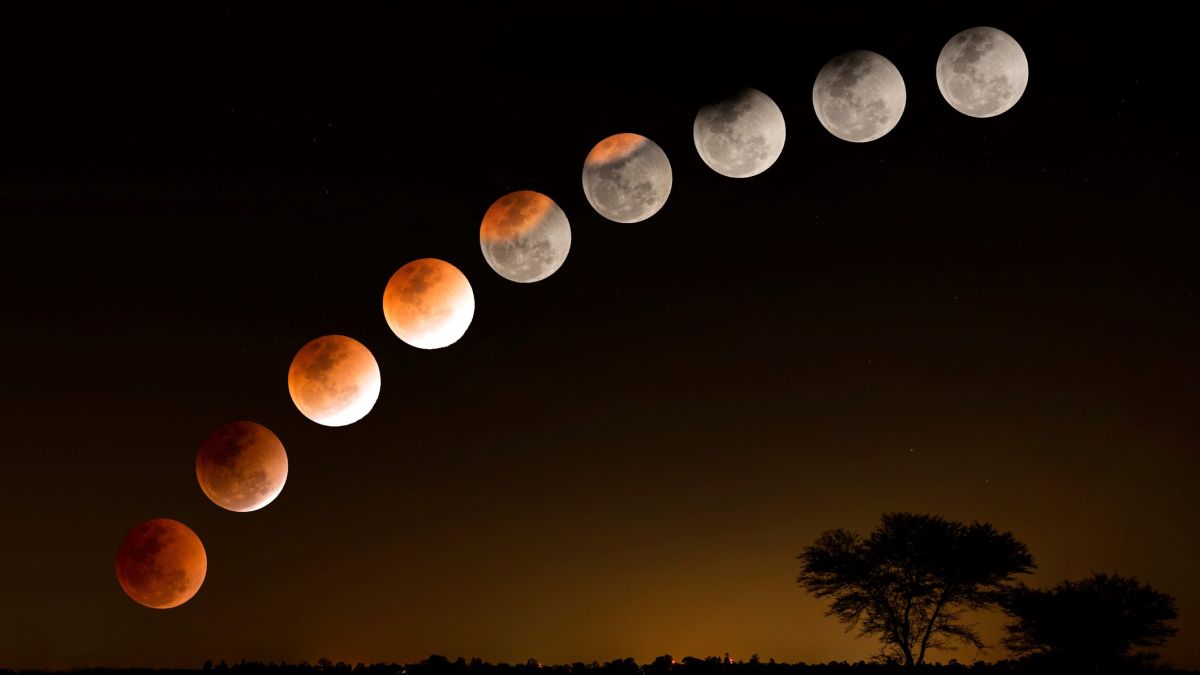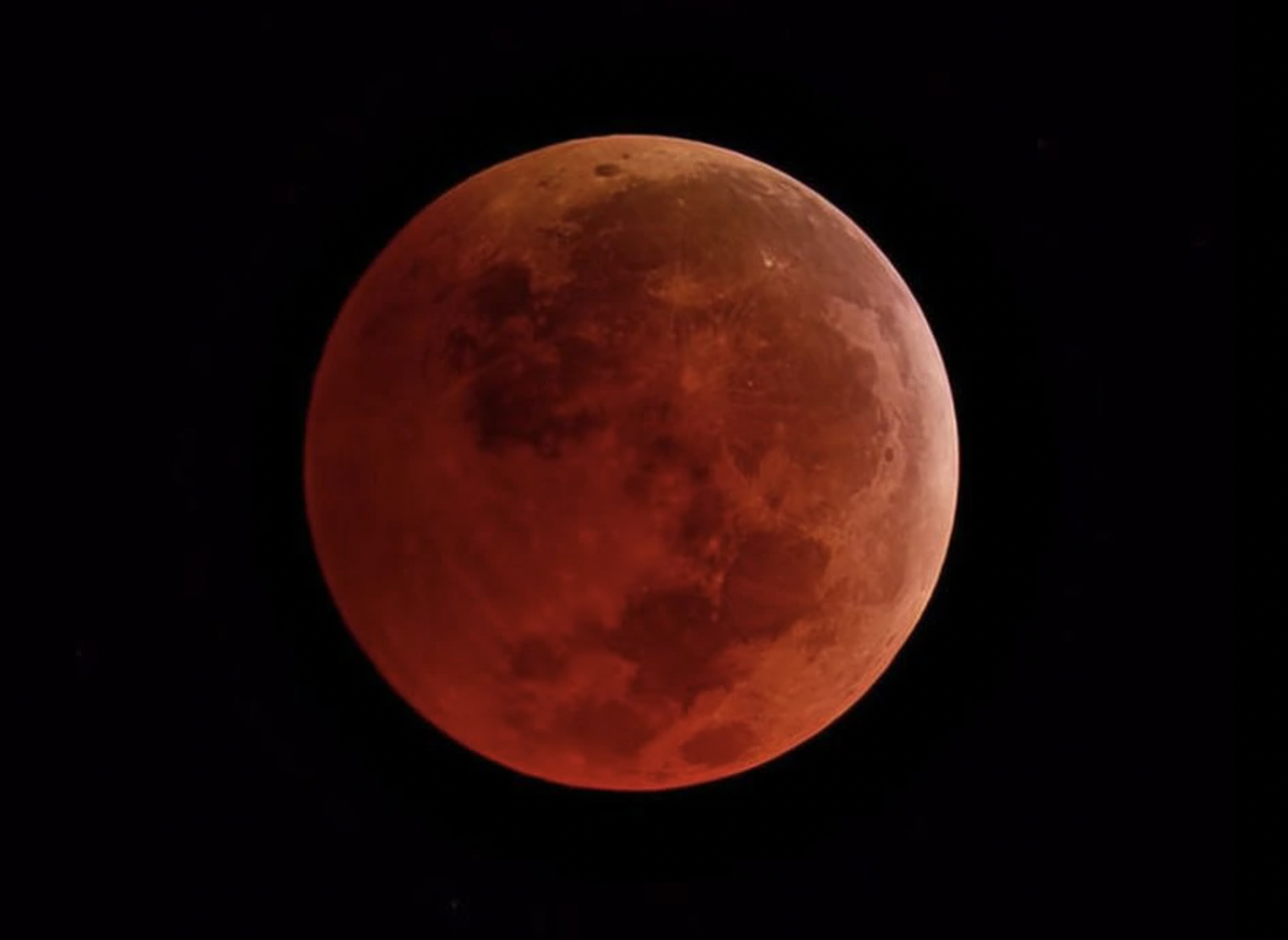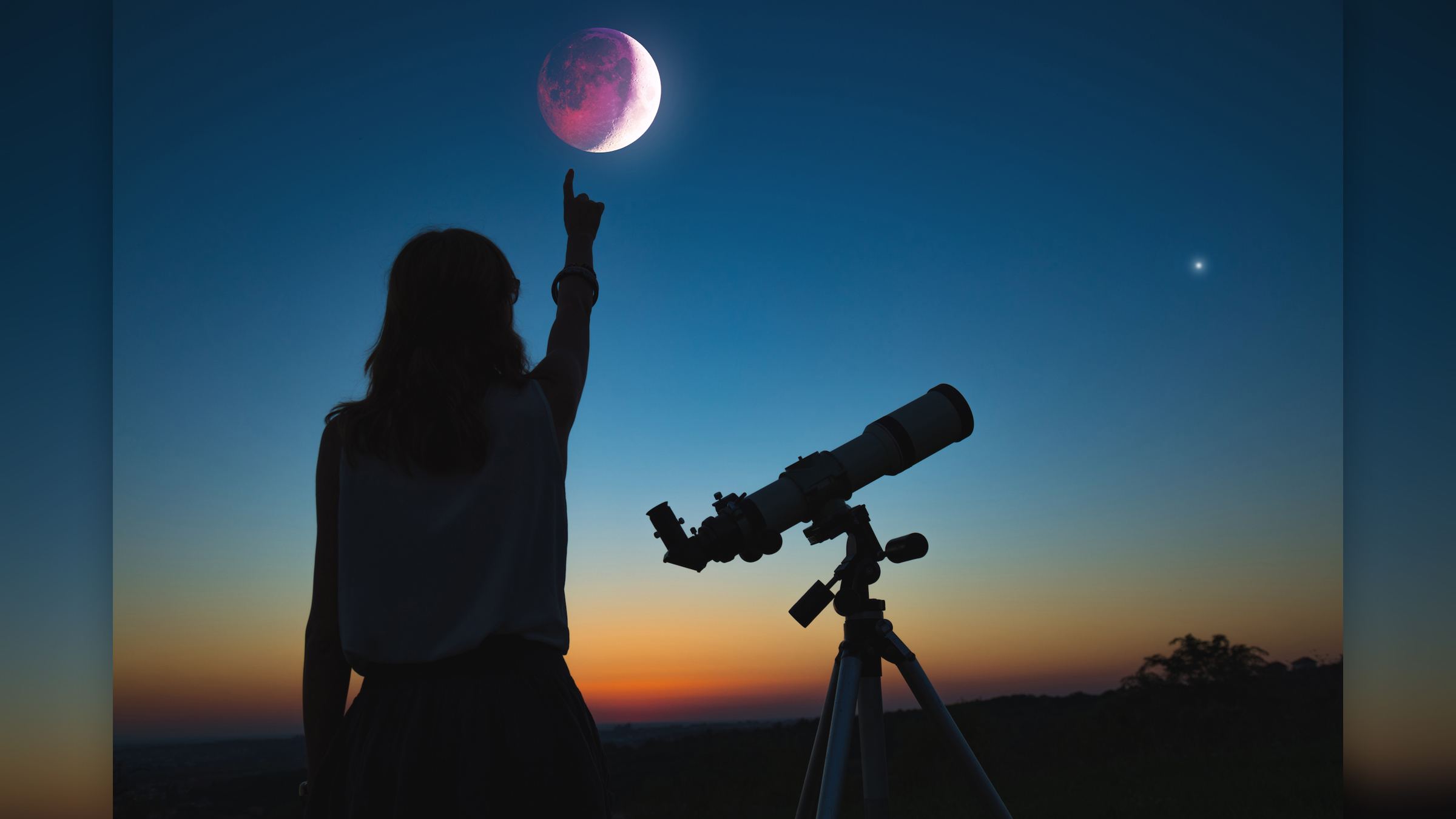Why Should You Be Excited To Watch The Lunar Eclipse 2022?
The Blood Moon total lunar eclipse 2022, also known as the Super Blood Flower Moon, is bound to happen on Monday 16th May.
Author:Evelyn AdamsReviewer:Mia ThompsonDec 21, 20234.4K Shares60.2K Views
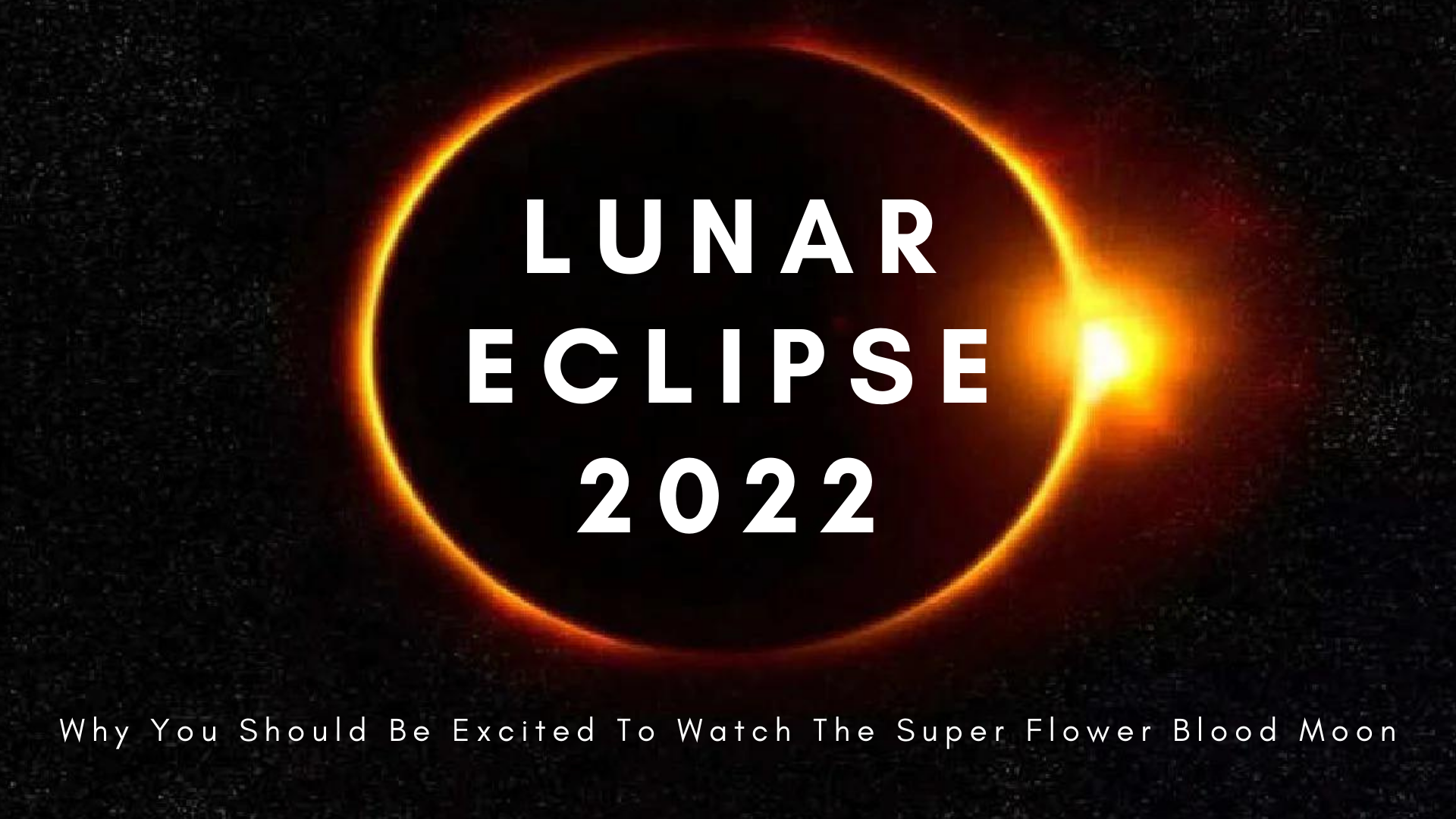
Lunar Eclipse- The Blood Moon total lunar eclipse 2022, also known as the Super Blood Flower Moon, is bound to happen on Monday 16th May.
The sun, moon, and Earth will align Sunday night, casting a shadow on the surface of the full moon. The moon takes on a striking reddish hue as a result of the shadow, which is why lunar eclipses are also known as blood moons.
Keep reading for everything you need to know about the Blood Moon lunar eclipse, including where to see it and details on what is a Lunar Eclipse.
Lunar Eclipse Overview
A total lunar eclipse occurs when the full Moon passes in space through Earth's shadow. Each month, the New Moon passes roughly between the Earth and the Sun before orbiting the opposite side of the Earth to become the Full Moon. When those alignments are exact, a solar or lunar eclipse occurs. The Moon turns a dark red color during a lunar eclipse because it is illuminated by light that has passed through the Earth's atmosphere.
The depth of the Full Moon's plunge into or near the umbra, our planet's dark, central shadow, determines the type of lunar eclipse (total, partial, or penumbral). Lunar eclipses do not occur more frequently because the Moon's 5 orbital tilt causes it to pass above or below Earth's shadow in space. Only when the Sun, Earth, and Moon align in a straight line does the Moon cross into Earth's shadow. When this occurs, observers in the Earth's hemisphere facing the Moon see a lunar eclipse. This is what will happen in the right hemisphere on the morning of May 16, 2022, for the first half of the eclipse.
Lunar Eclipse 2022: The Super Flower Blood Moon
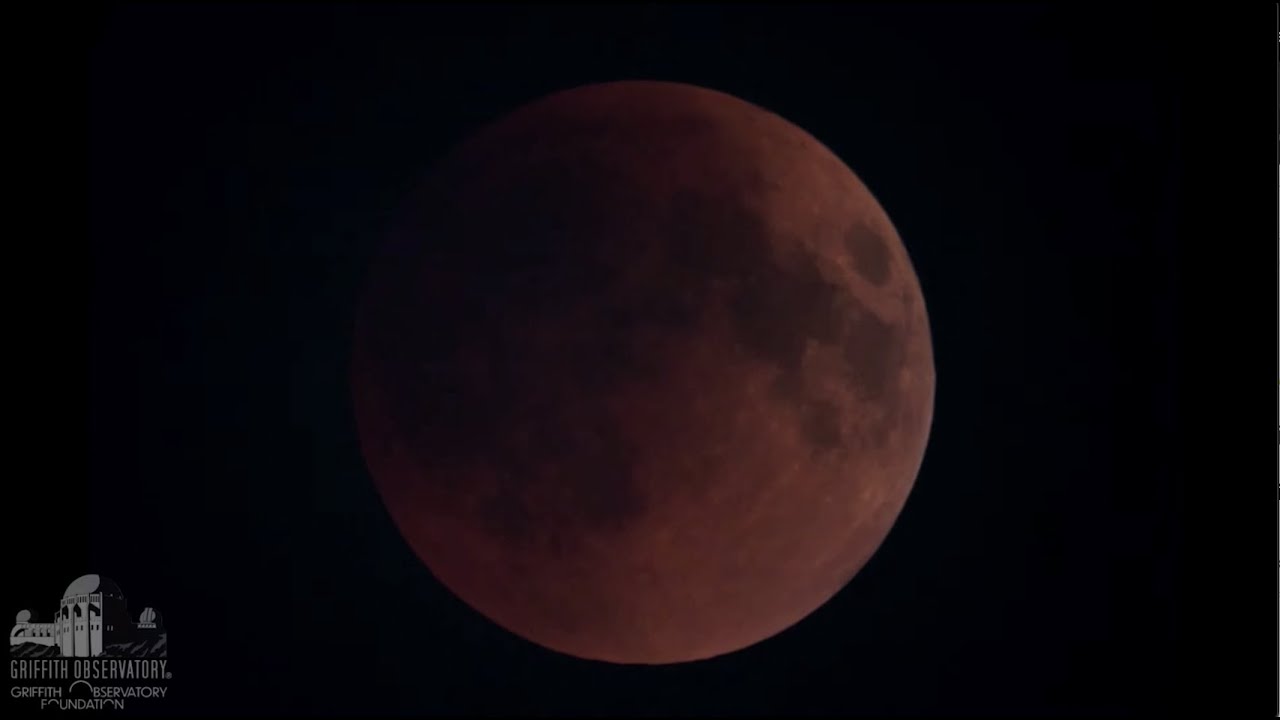
Super Flower Blood Moon turns red in total lunar eclipse time-lapse
On May 16, 2022, a total lunar eclipse will be visible over South America, most of North America, and parts of Europe and Africa. People in the UK will not be able to see every part of the eclipse, but they will be able to see the lunar eclipse at totality, when the entire Moon turns red. The Moon will begin to enter the Earth's shadow shortly after 2.30 a.m. BST, and the total eclipse will occur shortly before 4.30 a.m.
The total eclipse lasts more than five hours and ends at 7.50 a.m. However, because the Moon will have set below the horizon by the end of this period, observers in the UK will only be able to see the eclipse from 2.32 a.m. to 5.10 a.m.
The best time to see the eclipse is between 4.29 and 5.06 a.m. This is the totality period in London when the Moon appears red because it is entirely in the Earth's umbra (full shadow). The entire Moon will still be visible.
The Detailed Meaning Of "Super Flower Blood Moon"
The eclipse this year has been given many names, but the most popular has been "Super Flower Blood Moon." There are three parts to that name, and here's what they mean:
- Super - According to NASA, a "super moon" occurs when the moon is closest to its point of "perigee," or its closest point to the Earth in its elliptical orbit around our planet. The full moon on Sunday will be the first "super moon" of 2022, with three more to come this year. The moon appears larger and brighter in the sky during a "super moon" than it does at other times.
- Flower - Each month's full moon has its own name, and the "flower moon" takes to the skies over Earth in May. According to the Old Farmer's Almanac, the moon next month is known as the "Strawberry Moon."
- Blood - When a lunar eclipse occurs, the moon takes on a reddish hue, earning it the nickname "blood moon." During a total lunar eclipse, the sun, Earth, and moon perfectly align, with the Earth blocking most of the sun's rays from reaching the moon. As a result, the moon appears red during a lunar eclipse.
Best Place And Time To Watch The Lunar Eclipse 2022
The eclipse will be visible across much of the globe, including the Americas, much of Europe and Africa, and parts of the Pacific. While some Asian countries will not see it, parts of South America, Europe, and the Middle East will catch a glimpse of the Moon turning blood red over the weekend. Up to 99.1 percent of the Moon's disk will be within Earth's umbra during this eclipse.
The eclipse will be visible in a number of cities, including Rome, Brussels, London, Paris, Havana, Johannesburg, Lagos, Madrid, Madrid, Santiago, Washington DC, New York, Guatemala City, and Rio de Janeiro, and Chicago. While these cities will experience a total lunar eclipse, Ankara, Cairo, Honolulu, Budapest, and Athens will only see a partial eclipse.
The Total Lunar Eclipse will begin at 7:02 a.m. (IST) on May 16, followed by the Astrological Partial phase at 7:57 a.m. as the Moon enters Earth's umbra. It will appear as if a bite is being taken out of the lunar disk at this time. The Moon's shadow will be very dark inside the umbra. The total lunar phase of the eclipse will start at 8:59 a.m. when the entire Moon will be in the umbra of the Earth and will turn coppery-red.
Tips For Observing The Lunar Eclipse
Unlike a solar eclipse, viewing a lunar eclipse requires no special safety glasses or instruments; simply look up in the sky at the appropriate time. Binoculars or a good telescope, on the other hand, provide a more detailed view of the Earth's shadow as it sweeps across the Moon's surface. The best viewing conditions are in a dark environment away from bright lights. Binoculars, for example, make it easier to detect subtle shading caused by sunlight filtering through Earth's atmosphere.
If you are unable to observe the Lunar Eclipse in person, don't worry; NASA will broadcast live streams of the eclipse from around the world. From 11 p.m., they'll also host an episode of NASA Science Live. until 12 a.m. ET. Set a reminder to watch it when NASA begins live streaming.
Lunar Eclipse FAQs
What Happens During A Lunar Eclipse?
A lunar eclipse occurs when the Sun, Earth, and Moon all align, causing the Moon to pass into the shadow of the Earth. During a total lunar eclipse, the entire Moon is engulfed in the darkest part of Earth's shadow, known as the umbra. Most of the southern hemisphere will be able to see the Total Lunar Eclipse.
What Is The Difference Between Solar And Lunar Eclipse?
Traditionally, eclipses are classified as either solar or lunar. Solar eclipses happen when the Moon passes between the Earth and the Sun, casting a moving shadow on the Earth's surface. When the Earth passes between the Sun and the Moon, it casts a shadow on the Moon.
Why Is Lunar Eclipse Red And Called Blood Moon?
Because of its reddish appearance, a total lunar eclipse is also known as a blood moon. This occurs as red wavelengths of sunlight pass through Earth's atmosphere and land on the moon's surface.
Conclusion
It is indeed that Lunar Eclipse is very exciting to experience. Whether you live in a part of the world where the Moon won’t be visible in the sky during the event of the Lunar Eclipse or you simply forget to look up, you don't have to worry.
You might get another chance later this year. The next total lunar eclipse will occur on November 8, 2022, and will be visible from parts of the world that were not affected by Saturday's eclipse, including Asia and Australia, though much of Africa and Europe will be excluded.

Evelyn Adams
Author
Evelyn Adams is a dedicated writer at Kansas Press, with a passion for exploring the mystical and uncovering hidden meanings.
Evelyn brings a wealth of knowledge and expertise to her insightful articles. Her work reflects a commitment to providing accurate information, thoughtful analyses, and engaging narratives that empower readers to delve into the mysteries of the universe.
Through her contributions, Evelyn aims to inspire curiosity, spark imagination, and foster a deeper understanding of the supernatural world.

Mia Thompson
Reviewer
Mia Thompson is a versatile writer at Kansas Press, delving into a range of topics including news, spiritual exploration, astrology, and numerology. With a passion for delivering insightful and informative content, Mia's articles provide readers with valuable perspectives and thought-provoking insights into these intriguing subjects.
She is dedicated to creating content that resonates with readers and fosters a deeper understanding of complex topics.
Latest Articles
Popular Articles
